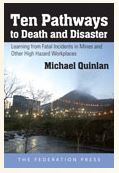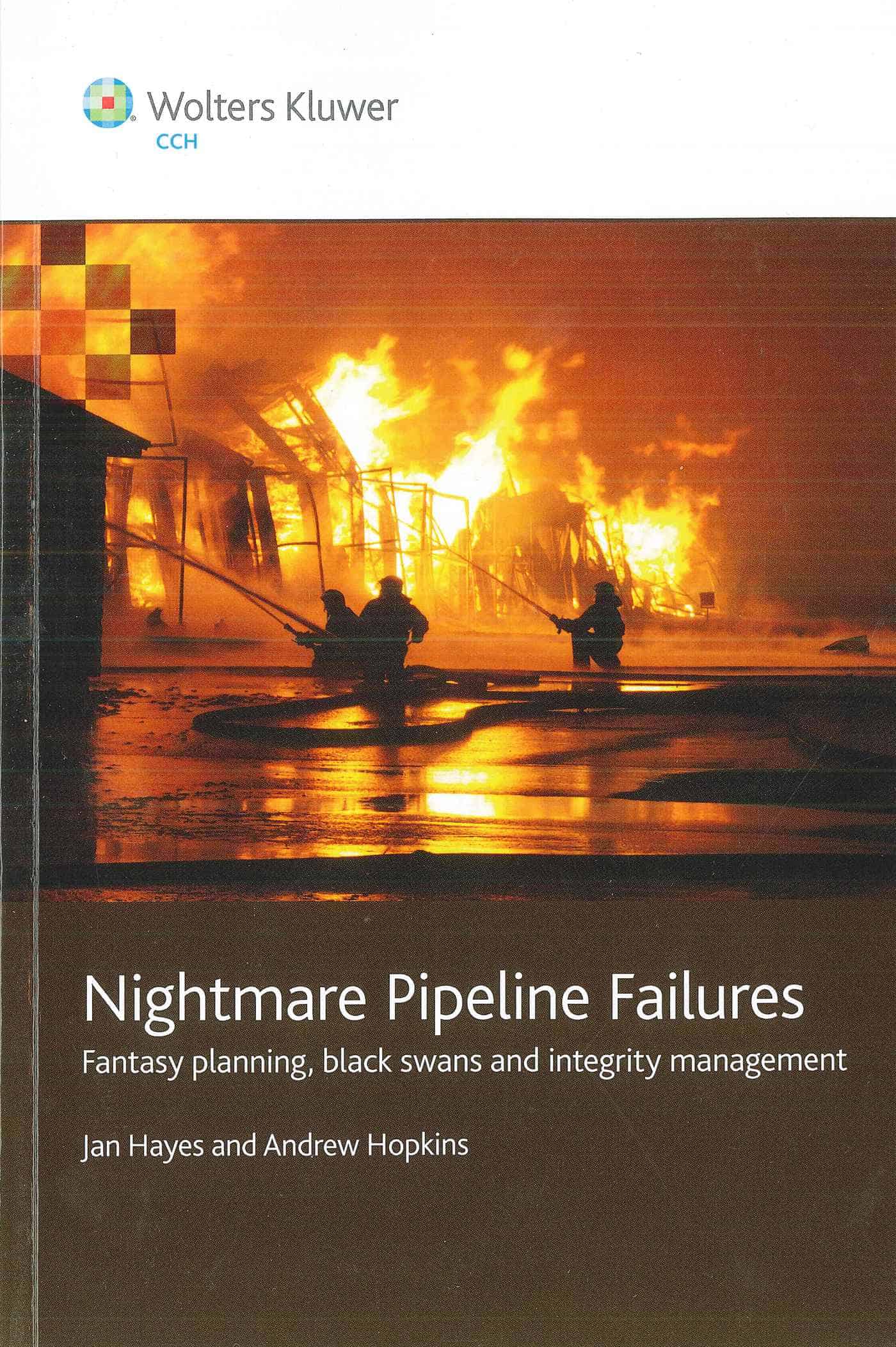 SafetyAtWorkBlog is proud to have been listed as one of Australia’s Best Business Blogs by business resource website SmartCompany.
SafetyAtWorkBlog is proud to have been listed as one of Australia’s Best Business Blogs by business resource website SmartCompany.
Category: risk
New book challenges current OHS trends
 Professor Michael Quinlan has a new book that focuses on lessons from recent mining disasters but, as with the best of occupational health and safety (OHS) books, it challenges orthodoxies. Some OHS consultants and experts have built careers on these orthodoxies, trends and fads, and will feel uncomfortable with the evidence put forward by Quinlan in “Ten Pathways to Death and Disaster – Learning from Fatal Incidents in Mines and Other High Hazard Workplaces“. The honesty and humanity in this book makes it an essential part of any OHS professional’s library.
Professor Michael Quinlan has a new book that focuses on lessons from recent mining disasters but, as with the best of occupational health and safety (OHS) books, it challenges orthodoxies. Some OHS consultants and experts have built careers on these orthodoxies, trends and fads, and will feel uncomfortable with the evidence put forward by Quinlan in “Ten Pathways to Death and Disaster – Learning from Fatal Incidents in Mines and Other High Hazard Workplaces“. The honesty and humanity in this book makes it an essential part of any OHS professional’s library.
Quinlan establishes an important tenet from the very start:
“… knowledge is not created in a social vacuum.” (page xi)
This simple dictum is vital to an understanding of the true causal factors on OHS decision-making. People die from OHS failures. Politicians create laws and situations that can encourage failures, increase risk and can provide a veneer of respect for heartlessness and exploitation. Business owners may feel pressured to place production before safety. Some OHS writers and advocates stop, often unconsciously, at the point where their theory or market research would fail scrutiny. Some apply critical thought only “as far as is reasonably practicable” to continue a business activity that is short-term or to sell their consultancy package to gullible or naive corporate executives.
Quinlan writes of the “political economy of safety”:
“The political economy perspective argues that safety, including workplace disasters, can only be understood in the context of the distribution of wealth and power within societies, and dominant social policy paradigms that privilege markets and profit, production or economic growth over safety.” (page 24, emphasis added)
To many readers this may sound like socialism in its mention of wealth distribution and power but such a perspective is valid even though it may be unfashionable. Such a broad perspective allows for a critical assessment of other OHS research approaches such as, for instance, the culture advocates.
Impairment argument fails to convince Fair Work Commission over unfair dismissal
On 16 January 2015 the Australian newspaper (paywall) reported on a Fair Work Commission (FWC) decision involving an unfair dismissal claim by a worker who, as a result of a random drug test, was found to have methylamphetamine in her system “at levels four times above the minimum detection level”. The company, Downer EDI Mining, sacked the worker, Leah Cunningham, as she presented a hazard to her work colleagues. The newspaper article was called “CFMEU slammed for drugs defence” and the FWC decision is Tara Leah Cunningham v Downer EDI Mining Pty Limited (U2014/1457) (14 January 2015).
The Australian, a newspaper with no love for the trade union movement and the CFMEU in particular, focussed on the apparent absurdity of a trade union, that places such a high priority on workplace safety, contesting the dismissal of a worker who presented a hazard to herself and others at work. The newspaper quotes Commissioner Ian Cambridge:
““It was highly regrettable to observe during the hearing that an organisation, which apparently conducts campaigns which strongly advocate safety in the workplace, could contemplate a proposition which, in effect, would countenance a person driving a 580-tonne truck whilst having methylamphetamine in their body at a level four times the reportable cut-off figure,” he said in his decision this week.
“Any realistic and responsible pursuit of the case on behalf of the applicant should have been confined to the development of evidentiary support for the applicant’s explanation for the presence of the methylamphetamine. Indeed, much greater energy and focus should have been devoted to such an evidentiary position rather than any attempt to defend the indefensible.”
New book on pipeline safety has OHS lessons for all
 Any new book by Andrew Hopkins is a cause for excitement. The latest book co-written with Associate Professor Jan Hayes* focusses, primarily, on two pipeline disasters in the United States but has sufficient information and thoughts for those OHS professionals outside this sector and jurisdiction.
Any new book by Andrew Hopkins is a cause for excitement. The latest book co-written with Associate Professor Jan Hayes* focusses, primarily, on two pipeline disasters in the United States but has sufficient information and thoughts for those OHS professionals outside this sector and jurisdiction.
“Nightmare Pipeline Failures: Fantasy planning, black swans and integrity management” is a typically slim volume written in Plain English that benefits from the broad knowledge of its authors. Readers of Hopkins’ early books will get all of the cross-references. In some ways, this book can be seen as almost a case-study of Hopkins’ work on mindfulness and high-reliability organisation, as the themes of management perspectives, activity and decision-making occur repeatedly in this book. Continue reading “New book on pipeline safety has OHS lessons for all”
A top OHS blog for 2014
I am very proud to receive recognition from LexisNexis again in 2014 for my work on the SafetyAtWorkBlog. On 16 December 2014 LexisNexis Legal Newsroom Workers’ Compensation named the SafetyAtWorkBlog as one of the Top Blogs for Workers’ Compensation and Workplace Issues. It is a great honour for a blog that is self-funded and written in my spare time.
LexisNexis has described some of the articles as “insightful and entertaining” and reflective. One article in particular was a discussion spurred by the writings of Terry Reis and would not have been possible without his initial article.
I thank LexisNexis for this unexpected honour and feel very proud to be amongst the other honourees for 2014. It is good to see new ones on the list and encourage all those OHS professionals who feel they have something to say, to say it. The more voices the OHS profession has, the richer our debates and the greater our state of knowledge.
Australia’s OHS Body of Knowledge project grows
The recent launch of several new chapters of the OHS Body of Knowledge (OHSBoK), associated with the Safety Institute of Australia, did not allow for questions from the audience but I was able to catch up with the coordinator of the project, Pam Pryor, and put my questions directly. (My thanks go to Pam for her honesty and time.)
One of the intentions of the OSHBoK has been to maintain currency and relevance. Was there a plan to review and revise the existing chapters? Pryor advised that there is a seven-year review schedule for all chapters. Some chapters may need reviewing earlier, particularly if there are references to specific legislation and that legislation has changed.
Is there a plan to establish an index or to improve searchability?
What if “reasonably practicable” was applied to a disease outbreak?
There seems to be an increasing trend for the principles of occupational health and safety (OHS) to be applied to matters outside the workplace. OHS principles were created to reflect the values of society in the 1970s and 80s and, although the laws have changed to reflect economic needs, the principles remain basically the same. A major legal change has been the move away from preventing harm “at the source” to one of reasonable practicability and this can reduce the overall level of safety available to workers and others.
It is interesting to note that statements on the current Ebola outbreak argue the sense in dealing with the outbreak “at the source”. Why do we accept a reasonably practicable control measure for harm at work but expect a stronger preventative measure for public health threats? Shouldn’t we be aiming to reduce all harm “at the source” regardless of the type of harm? Continue reading “What if “reasonably practicable” was applied to a disease outbreak?”
